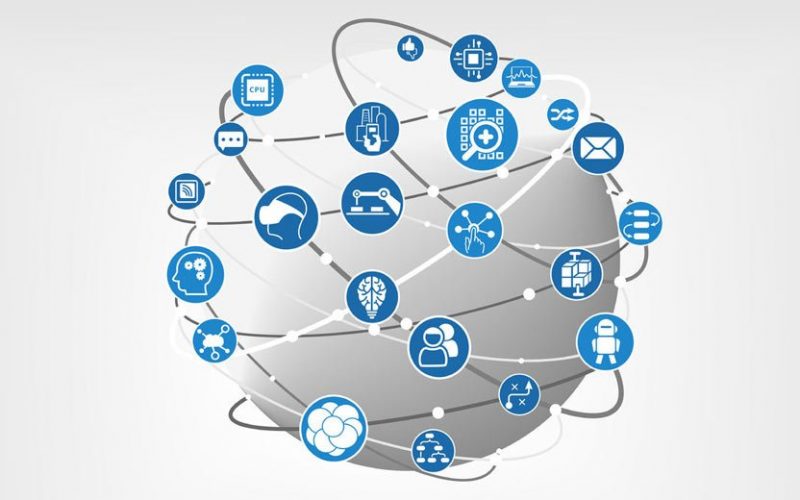Almost every business nowadays wishes to have predictive analytics skills. This connects to the increased interest in Big Data and artificial intelligence.
According to recent surveys, more than 90 percent of firms believe predictive analytics will be critical to their future success.
Only a quarter to a third of respondents is now using the tools. Part of the problem could be the difficulties in selecting the proper technology for your needs. Rushing to purchase to keep up with predictive data analytics trends is a sure way to end up with an expensive tool that falls short of expectations. How do you select the right predictive analytics tools for your needs? Experts recommend that firms begin the process of selecting predictive analytics tools by defining their requirements. Let’s explore the best free and open-source software and tools for predictive analytics in this article.
What are Predictive Analytics Tools?
Predictive Analytics tools are used to evaluate current and past data to better understand customers, goods, and partners. One can also utilize them to identify potential dangers and opportunities. Predictive analytics platforms are typically very complex products that necessitate high skill sets to use them effectively.
Predictive analytics may be an immensely effective tool in the hands of expert data analysts and data scientists. It can, for example, calculate a customer’s lifetime value; forecast sales for the next quarter; or predict what product an online shopper is likely to purchase next.
Predictive analytics tools make these analyses considerably easier and more accessible to enterprises. They alleviate the manual burden of combining disparate data sources into single analyses. Predictive analytics tools can standardize or even automate some repetitive analysis. Intelligent analytics engines can also make new or ad hoc analysis more accessible to technical and business analysts alike. These tools lessen the barrier to entry for many non-specialized users, albeit this is not universal across all analytics platforms.
What is Predictive Analytics?
Predictive analytics investigate, process, and aggregate historical data before applying various predictive modeling techniques to anticipate likely future events. Predictive analytics assists individuals and organizations in better understanding what is likely to happen in the future based on what has happened in the past.
This is one of the most advanced types of business analytics. It falls within the following categories of analysis offered to organizations:
- Descriptive analytics: It provides a real-time snapshot of what is happening right now. Current stock prices are one example of descriptive analytics.
- Diagnostic analytics:These analyses assist in explaining why or how something occurred or is currently occurring.
- Predictive analytics: These analytics use descriptive or diagnostic data to predict future results.
- Prescriptive analytics: These help guide what should do to achieve a specific objective.
Predictive analytics frequently overlaps with or evolves into prescriptive analytics. One can also use predictive analytics to prescriptively to inform other business decisions, either through standardized reporting or ad hoc strategic analyses.
The Importance of Good Data
Good data is the foundation of good predictive outcomes. To make predictions about what customers are likely to buy in the future, for example, detailed data on what they have previously purchased, attributes of purchased products, and so on is required.
Predictive models are created using techniques such as regression testing, decision trees, or other methodologies to measure the degree of correlation between variables to predict future behavior, assuming adequate high-quality data is available. Predictive analytics tools frequently use big data to make more informed and accurate predictions and assessments that are beyond the scope of manual analyses.
Business Intelligence vs. Predictive Analytics
Predictive Analytics tools are closely related to Business Intelligence and are sometimes regarded to be part of the BI universe. The distinction between BI and predictive analytics is that BI is typically regarded as descriptive, i.e. looking at what happened in the past. Predictive analytics is the process of discovering hidden patterns in data and utilizing complex mathematical models to forecast future outcomes.
The rise of big data platforms like Hadoop and highly rapid in-memory analytics products has resulted in some blurring of the distinctions between big data and predictive analytics.
Software Comparison for Predictive Analytics
When comparing predictive analytics tools and software, keep the following in mind:
- User Base:
Who will be the primary users of the predictive analytics tool? Will it be business users or technical specialists, such as data scientists? The primary user base will influence the required accessibility/ease of use for each product, as business users will likely require less technical methods of interacting with the analyses.
- Integration:
What data sources should the product be able to access? Where and how will analyses be used, and to what other systems should the product send data? Consider what existing tools the organization is using, then cross-reference that with what the product can demonstrably integrate with.
Pricing for predictive analytics tools can range from free open-source options to customized enterprise platforms that cost thousands of dollars per user. Organizations, on the other hand, receive the customization and simplicity of use for which they pay. Once the use case, user base, and necessary features have been determined, ensure that the pricing structure of each product aligns with your specific use case.
- Pricing Data:
A few well-known incumbent products control the lion’s share of the market, and these tools are much more expensive than newer upstart products with a much smaller market share. One of the leading products in the category costs more than $5,000 per user. Newer, less well-known products typically cost a fraction of the price of market leaders.
The free, open-source R programming language has over 3,000 community-developed predictive analytics tools, but it can be difficult to use because it is code-based and lacks a drag-and-drop visual workspace.
16 Best Predictive Analytics Tools and Software
#1. Cloud-based SAP Analytics
SAP Analytics Cloud combines planning, business intelligence, and predictive analytics as a unified cloud-based platform, allowing visualization, planning, and prediction to be performed in a single tool. It is built on the lightning-fast SAP Cloud Platform and integrates seamlessly.
#2. RStudio
RStudio is a modular data science platform that combines open source and commercial products. According to the vendor, their open-source offerings, such as the RStudio IDE, Shiny, markdown, and the many packages in the tidyverse, are used by millions of data scientists worldwide to…
#3. IBM SPSS
SPSS Statistics is a statistical analysis software program. It is now officially known as “IBM SPSS Statistics”. One can use the companion tools in the same family for survey authoring and deployment (IBM SPSS Data Collection), data mining (IBM SPSS Modeler), and text predictive analytics.
#4. Alteryx
Alteryx aspires to be a launchpad for automation breakthroughs. Whether it’s for personal development, achieving transformative digital outcomes, or rapid innovation, the vendor promises users will see unrivaled results. Alteryx combines analytics, data science, and process automation into one seamless system.
#5. MicroStrategy Analytics
MicroStrategy Analytics is a platform for enterprise business analytics and mobility. Key features include automatic big data analysis and reporting, data discovery and visualization, digital security credentials, and mobile device support.
#6. Anaconda
Anaconda is an open-source python distribution/data discovery & predictive analytics platform.
#7. Logi Analytics
Logi Analytics is a developer-grade analytics platform for application teams that need to rapidly build, deploy, and maintain mission-critical applications. It supports the embedded model, increasing the likelihood of businesses developing valuable, long-lasting applications. …
#8. SAS Advanced Analytics
SAS Advanced Analytics is the company’s suite of applications and modules for advanced statistical analysis and predictive modeling. Products from the suite are available a la carte or in bundles, such as SAS Analytics Pro, which provides an alternative to mixing and matching software…
#9. Magellan OpenText
OpenText Magellan Analytics Suite employs a comprehensive set of data analytics software to identify patterns, relationships, and trends through data visualizations and interactive dashboards.
#10. IBM SPSS Modeler
IBM SPSS Modeler is a predictive analytics platform that enables users to quickly build accurate predictive models and deliver predictive intelligence to individuals, groups, systems, and enterprises. The software is designed to…
#11. NICE Nexidia Predictive Behavioral Routing (formerly Mattersight)
Since the acquisition of Mattersight Predictive Behavioral Routing by NICE Nexidia Analytics, the former Mattersight Predictive Behavioral Routing service has been integrated into NICE Nexidia Analytics.
#12. Panoply
Panoply is a cloud-based, ETL-free, intelligent end-to-end data management system. It is a combined ELT and Data Warehouse software with integrated visualization and storage optimization algorithms.
#13. H2O
H2O.ai is a platform for predictive analytics tools and machine learning that is open source.
#14. DataRobot
The DataRobot enterprise AI platform is positioned as a solution that accelerates and democratizes data science by automating the end-to-end path from data to value and enabling customers to build AI applications at scale. DataRobot provides a centralized platform that…
#15. Intricately
Provides intricate sales intelligence for professionals who sell and advertise technological products. The vendor’s goal is to assist businesses in locating the right accounts and seizing every chance to connect in a value-driven manner. Furthermore, the seller claims that their software provides a 360-degree perspective…
#16. The Weather Service
The Weather Company, an IBM Business, provides tailored and actionable weather forecasts to millions of individuals and thousands of organizations across the world. On any device, the product gives weather intelligence and analysis.
Predictive Analytics Tools FAQ’s
What are methods of predictive analytics?
Data modeling, machine learning, AI, deep learning algorithms, and data mining are examples of predictive analytics statistical methods.
What is the best tool for predictive analytics?
IBM SPSS Statistics. There is no way to go wrong with IBM’s predictive analytics tool.
How do companies use predictive analytics?
Predictive analytics is used to predict client responses or purchases and to enhance cross-sell opportunities. Predictive models assist firms in attracting, retaining, and expanding their most profitable consumers.
What is an example of prescriptive analytics?
Waymo, Google’s self-driving car, is a prime example of prescriptive analytics in action. Every trip, the vehicle does millions of computations to determine when and where to turn, whether to slow down or speed up, and whether to change lanes – the same decisions that a human driver makes behind the wheel.
- Predictive Analytics: Definition, Examples, and Benefits
- Predictive vs Prescriptive Analytics, Explained!!! (+ Detailed Guide)
- Prescriptive Analytics: Definition, Real-World Examples, How it Works
- Types of Analytics: How to Apply them in any Business
- SAP ACCOUNTING: What is Sap Accounting? (+ Top 2021 Courses)






